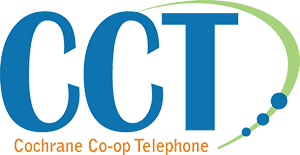Capital Credits
What are Co-ops?
Co-ops are owned by their members – the people who use the cooperative’s products and services – and are driven by service rather than profit. Cooperatives allow ordinary people to join together to gain economic power and to improve their lives and communities. A valuable benefit for cooperative members is capital credits.
What are Capital Credits?
Capital credits reflect each member’s ownership in the cooperative. Cochrane Co-op Telephone (CCT) does not earn profits in the sense that investor-owned utilities earn profits for their investors. Instead, any margins or revenues related to the co-op remaining after all expenses have been paid are returned to the cooperative’s members in proportion to the services they subscribe to.
How are Capital Credits Returned to You, the member?
“Retiring” – paying back or returning capital credits – is a two-step process.
Step 1 Allocation
An allocation determines your share of the cooperative’s margin in a particular year. Margins are “allocated” or assigned to members who have service with CCT during the year in which the margin is generated. The allocation is based on the member’s services they subscribe to for that year. Each member’s portion is referred to as a “capital credit allocation”.
Step 2 Retirement
Once capital credits are allocated, they are retained by CCT until the Board of Directors review the cooperative’s financial health and can declare a “retirement” which is usually done once a year. Capital Credits are retained because they are the most significant source of equity for the cooperative. Equity is used to help meet the expense of the co-op, such as investing in plant, new technology to serve our members and repaying debt. Capital credits help keep rates at an affordable level by reducing the amount of funds that must be borrowed to grow and maintain CCT.
